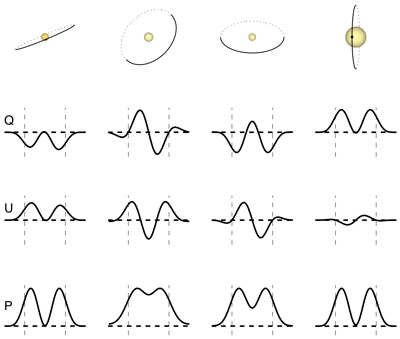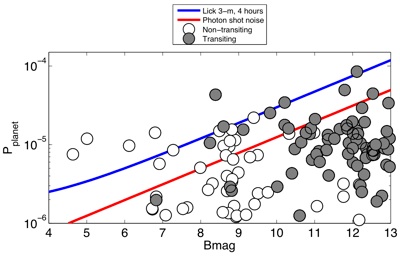Direct Detection of Exoplanets with Optical Polarimetry (6)
POLISH2 Detection Limits
The POLISH2 instrument (see the Instrumentation section) is designed to reach part per million accuracy each night on exoplanet host stars.
To maximize signal-to-noise, RV surveys target bright stars. High resolution spectroscopy splits starlight onto many pixels, which ensures that bright stars do not saturate detectors. In contrast, transit surveys require many stars of similar brightness to accurately perform differential photometry. Bright stars tend not to have large numbers of equally-bright stars nearby. In addition, imaging focuses all of the starlight onto a few pixels, which causes stars brighter than V < 8 to saturate detectors. Thus, due entirely to selection effects, known transiting exoplanets tend to orbit fainter stars than do known non-transiting exoplanets.
Followup studies of exoplanets with Spitzer, Keck, CFHT, and other observatories tend to be performed on transiting exoplanets, because the signal “chopping” that occurs during transit and secondary eclipse dramatically reduces the systematic effects of the measurement. All exoplanet detection methods are limited not by photon shot noise but by systematic effects; as such, followup studies prefer transiting exoplanets. However, these followup methods tend to be photon-starved, and the faintness of transiting exoplanet host stars greatly inhibits the science that can be done on these exoplanets. This is particularly significant in followup studies of exoplanets discovered by Kepler.

